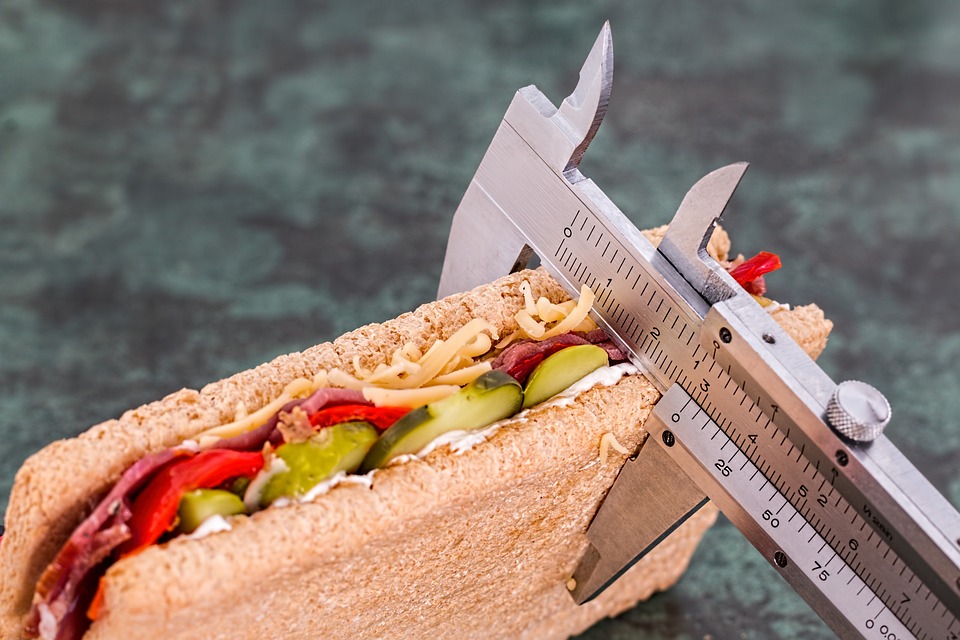Best Diet for Lipedema – Complete Nutrition Plan
What is Lipedema | Lipedema Causes | Lipedema Symptoms | Stages of Lipedema | Treatment Options for Lipedema | Best Diet for Lipedema | Foods to Avoid With Lipedema | Intermittent Fasting for Lipedema | Impacts of Intermittent Fasting on Lipedema
Lipedema is a chronic and progressive medical condition that causes a disproportionate accumulation of fat especially in the lower limbs. It is often mistaken as obesity and predominantly affects women. It does not just bring physical distress but causes emotional trauma too due to the abrupt body shape.
Although lipedema treatment has various options including compression therapy, low-impact workouts, and in some cases surgery, a healthy diet can play a major role in treating lipedema better.
In this article, we will discuss in detail the best diet that should be incorporated to ease the symptoms of lipedema as well as what food items to avoid in the diet for lipedema to reduce the pain and discomfort of the condition. Besides, we would also try to understand whether intermittent fasting is beneficial for lipedema.
What is Lipedema?
Lipedema is a chronic condition in which your body fat cells get inflamed and accumulate disproportionately around your lower body. It predominantly affects around 11% of women and causes a build-up of fats around the hips, pelvis, calves, and thigh region.
It is usually mistaken as obesity but lipedema can cause intolerable pain and sometimes immobility due to the inflammation of the legs. It may occur due to hormonal changes during the menstrual cycle, puberty, pregnancy, or menopause. The estrogen imbalances could potentially be responsible for over-accumulation of adipose tissues.
Lipedema Causes
Often misdiagnosed as obesity the exact cause of lipedema is unclear, however, researchers believe that it may be caused due to inheritance, which means if you have a family history of lipedema, you may be more vulnerable to developing this disease.
Although lipedema is not caused due to obesity, the majority of lipedema patients come under the obese or overweight category. Lipedema is also prevalent in people having polycystic ovarian syndrome (PCOS), where the testosterone levels are high.
The causes of lipedema may include the following:
- Loss of elastic tissue and abnormal vasculature
- Abnormalities in the lymphatic system that lead to fluid accumulation
- Altered left ventricular rotational mechanics and stiffness in the aorta

Lipedema Symptoms
The onset of lipedema symptoms largely depends on the life stages. The condition is often exacerbated due to the major hormonal imbalances in women with lipedema when they go through puberty, pregnancy, childbirth, and menopause. Some common symptoms of lipedema may include:
- Emotional distress such as anxiety, and depression
- Lethargy
- Fluid retention and build-up
- Swelling of the lower limbs
- Fat accumulation in the buttock, hip, pelvis, thigh, and calf region and sometimes in the upper arms also
- Tenderness and easy bruising
- Pain in the inflamed areas
- Sense of heaviness in legs and arms
- Fibrosis of the fat tissue
- Immobility with worsening of the condition
- Hypothyroidism
Stages of Lipedema
During the early stages, lipedema can be uncomfortable. But as the stages develop, the gradual accumulation of fats can cause immobility (difficulty in walking properly). Hence it is indispensable to recognize the stages to get the proper treatment. The stages of lipedema gradually progress as follows:
- Stage 1: The skin surface appears to be normal, but you may experience pebbles-like structures under the skin along with pain and bruising.
- Stage 2: The skin surface gets uneven and you may experience lumpy or dimpling pockmarks. It represents the thickening of the tissues under your skin (fibrosis).
- Stage 3: Legs have large skin folds of fat tissue making it tough to mobilize, and have a reduction in blood flow in the lymphatic and blood vessels, causing inflammation and excruciating pain.
Treatment Options for Lipedema
Lipedema is a chronic condition that may lead to significant disability which includes impairment of daily functions if left untreated. It can cause mental agony too. On the contrary, treatment can considerably improve the condition by reducing pain, swelling, and inflammation. The treatment options include:
1. Natural and Non-invasive Therapies
Here are some non-invasive natural therapies to consider:
- Wearing compression garments or multi-layered compression dressing
- Decongestive therapy which is a massage technique with a compression wrapping
- Lymphatic drainage massage is a type of mild skin massage or skin stretching technique
- Pneumatic compression device which is being worn on the legs
- Skin moisturising
- Medication or supplements that include phentermine, metformin, amphetamines, diosmin, resveratrol, and selenium help alleviate chronic inflammation, swelling, support metabolism, and other related issues.
2. Invasive Therapies
Here are some surgical interventions:
- Liposuction: Accumulation of fat can be removed with liposuction. It can also help with increasing mobility and alleviating pain and chronic inflammation. Usually, wet-jet-assisted liposuction is recommended over standard liposuction because it is less likely to damage the lymph vessels.
- Bariatric surgery: If you have lipedema with a BMI of more than 35, then you may be recommended to go for bariatric surgery by your doctor.

Best Diet for Lipedema
Before you directly get into invasive treatment procedures to get rid of lipedema, you should know that your diet plays a key role in alleviating your lipedema symptoms. Nutritious food is an essential factor that plays a very important function in supporting therapeutic success. A healthy diet is an essential part of lipedema treatment. Your body needs to burn fat and maintain the fluid balance of the body. Here are some best diet plans to treat lipedema.
1. The Rare Adipose Disorder Diet (RAD Diet)
The rare adipose disorder diet is a modified form of the Mediterranean diet that helps you maintain a low glycemic index. This helps regulate your occurrences of blood sugar level upsurges. To follow a RAD diet, it is recommended to avoid any form of refined sugars and carbohydrates that are found in foods like potatoes, rice, pasta, bread, corn, etc.
By avoiding processed foods you can keep your insulin levels low which in turn helps prevent inflammation. The RAD diet includes the consumption of more fruits, vegetables, whole grains, and healthy proteins.
It is also recommended for lipedema patients to avoid dietary inflammation triggers. However, these dietary inflammation triggers may vary on an individual basis. Some patients with lipedema may have an intolerance to gluten or dairy products.
For example, if you are gluten intolerant then you must avoid foods like wheat, rye, or barley as these are high in gluten. Instead, you may opt for foods rich in omega-3 fatty acids as well as high-fibrous foods to help your body burn more fat and fight inflammation. In this case, you may focus on foods like nuts, beans, fish, and whole grains.
2. Lipedema Anti-Inflammatory Diet
What is considered an anti-inflammatory diet for lipedema? Well, it includes foods such as:
- Colorful fruits such as bananas, cherries, raspberries blueberries, and veggies including chard, garlic, spinach, cucumbers, pumpkin, carrot, cauliflower, and onion.
- Fermented foods such as kefir, yogurt, kimchi, sauerkraut
- Lean proteins such as eggs, salmon, chicken, fish, beans, lentils, edamame, Greek yogurt, cottage cheese, or tofu
- Whole grains including barley, bulgur wheat, faro, millet, quinoa, black rice, brown rice, and red rice
- Spices like ginger, black pepper, cumin, and turmeric, and all fresh herbs
These are foods filled with nutrients and have anti-inflammatory effects as well. To enjoy the anti-inflammatory diet, a comprehensive meal plan is shared below for your reference.
Breakfast: If you are not gluten intolerant, try adding the following toppings to your whole wheat bread or cracker, so that your diet for lipedema becomes enjoyable. However, if you are gluten intolerant, just consider eating the toppings.
- Egg with avocado
- Banana with organic peanut butter
- Garden-fresh blueberries with almond butter
- Chia seeds, strawberries, and honey
Lunch: Your lunch must contain various types of salads because they are light and fresh. These include:
- Balsamic, pecan, spinach, and strawberry
- Fresh tomato, basil and mozzarella
- Asian slaw with Thai peanut dressing
- Cucumbers, apples, lemon, almonds, and olive oil
Snack: A homemade trail mix according to your personal preference is a great choice for snacking which includes a variety of dried fruits, nuts, and seeds. Nuts and seeds are loaded with healthy fats and nutrients, vitamin E, magnesium, and selenium. They are high in fiber which makes you stay satiated for longer so that you consume fewer calories. Nuts and seeds are low in carbs, loaded with antioxidants, and can aid in weight loss. These items include:
- Nuts: Walnuts, cashews, peanuts, almonds, Brazil nuts, macadamia nuts, hazelnuts, and pecans
- Dried fruits: Unsweetened blueberries, cranberries, raisins, blackberries, kiwi, cherries and mangoes
- Seeds: Sunflower seeds, pumpkin seeds, watermelon seeds, and muskmelon seeds
Dinner: Your dinner must include one portion of lean protein, one portion of veggies, and one portion of whole grain or potato. You can combine any one from each of the following.
- Protein: Tuna, salmon, shrimp, chicken, turkey, snapper, eggs, or other lean meats
- Vegetables: Cauliflower, chard, garlic, broccoli, eggplant, cabbage, spinach, lettuce, carrots, green beans, sprouts, Brussels sprouts, onions, etc.
- Whole grains: Quinoa, buckwheat, millet, brown rice, sorghum, amaranth, teff, wild rice, sweet potato, and cracked grains.
3. Ketogenic Diet
As per a 2021 study, a ketogenic or keto diet is beneficial for many women with lipedema fat. A keto diet restricts the intake of carbohydrates including rice, pasta, bread, sugar, potatoes, and most sugary fruits. It focuses on consuming high amounts of fats and low to moderate amounts of proteins. This leads to a metabolic state called ketosis wherein your body starts to use fats as its primary source of energy instead of fats.
But does a keto diet help alleviate the symptoms of lipedema? A recent study says, the keto diet helps improve the pain and discomfort and improves the quality of life in patients with lipedema.
The benefits of a keto diet on lipedema patients are as follows.
To learn more about the Keto diet visit – 21-Day Intermittent Fasting Keto Meal Plan.
Foods to Avoid With Lipedema
Although you may not experience an immediate change in your condition, certain food items may even worsen your lipedema symptoms. Hence it is better to avoid these food products.
- Red meat and sausages
- Full-fat dairy like whole milk, high-fat cheese, or condensed milk
- Processed foods loaded with fats, sugar, or salt
- Margarines with other hydrogenated fatty foods
- Vegetable oils like sunflower or corn
- Bread, pasta, cookies, biscuits, pastries, and cakes
- Breakfast cereals with added sugars
- Fried foods such as chips, fritters, and other salty snacks
- Maple syrup, sugary beverages, honey, and other sweeteners
- Beverages that have high alcohol content, white wine, and beer
- Potatoes

Intermittent Fasting for Lipedema
There is limited research available on the role of intermittent fasting in managing lipedema. The results of fasting may vary considerably on an individual basis. Intermittent fasting is a pattern of eating that restricts the intake of food for a set period. It predominantly focuses on the time duration of the abstinence from food rather than restricting calorie intake.
There is a fasting window where you have to keep yourself refrained from eating for a pre-set time duration. Once the duration is over your eating window starts which allows you to take food according to your preference. Based on time duration, frequency, and calorie restriction level intermittent fasting is categorized into several types such as the 16/8 method, eat-stop-eat method, 5:2 diet, prolonged fasting method, alternate day fasting method, and warrior diet method.
Intermittent fasting causes several changes at a cellular and hormonal level.
- Cellular repair: When you fast, your body enters a state known as autophagy. It is a state wherein your body breaks down and destroys the dysfunctional proteins and removes them from the body. It also helps generate newer and healthy cells.
- Hormonal changes: Intermittent fasting induces several hormonal changes such as improving insulin sensitivity, reducing insulin levels and insulin resistance, promoting fat-burning, and enhancing human growth hormone (HGH) levels helping gain muscle and lose fat mass.
- Gene expression: Fasting stimulates cells to get activated and generate protein and RNA which helps protect from several diseases and improves longevity.
- Reduced inflammation: Fasting also reduces inflammation by supporting the body’s resistance to oxidative stress, combats free radicals, and promotes overall health.
Impacts of Intermittent Fasting on Lipedema
When your body enters into a fasting state, several metabolic changes occur inside your body which has several beneficial effects on lipedema.
- It reduces inflammation: Since fasting reduces inflammation by increasing the body’s resistance to oxidative stress, it might help alleviate the pain and swelling related to lipedema.
- Improves hormonal balance: Intermittent fasting potentially regulates hormones like insulin and growth hormone which induces fat burning and improves metabolism. This hormonal regulation leads to weight reduction which plays a key role in managing lipedema symptoms.
- Enhanced autophagy: Intermittent fasting induces a cellular repair process called autophagy. Although research is limited, autophagy could regulate the development of lipedema.
We have explored that intermittent fasting may not be a cure for lipedema but it has the potential to help manage lipedema symptoms by offering benefits like reducing inflammation, regulating hormonal imbalances, enhancing autophagy, and aiding weight management. However, before starting an intermittent fasting regimen, always consult with your healthcare practitioner, especially if you are a patient of lipedema.
The Final Words
Lipedema is a painful and progressive health condition that involves the accumulation of fats around your lower limbs and can cause mobility problems. While it can be misdiagnosed as obesity, the common obesity treatments can cause more harm than positive results in the case of lipedema.
When you are exploring a new diet for lipedema, make sure that it is not always about food. Along with diet restrictions, the mind-body connection is equally important for managing the symptoms. This means besides following your diet for lipedema, focus on your mental health, physical fitness, and overall well-being. Try adding breathing exercises and meditation to help your body heal from within.




